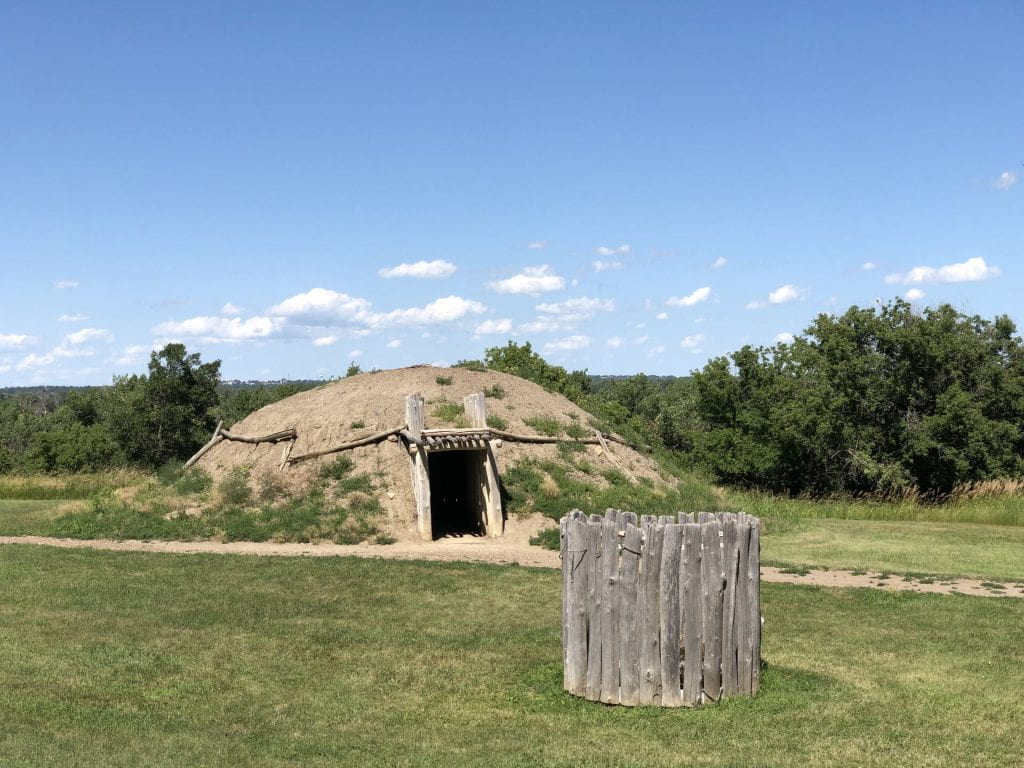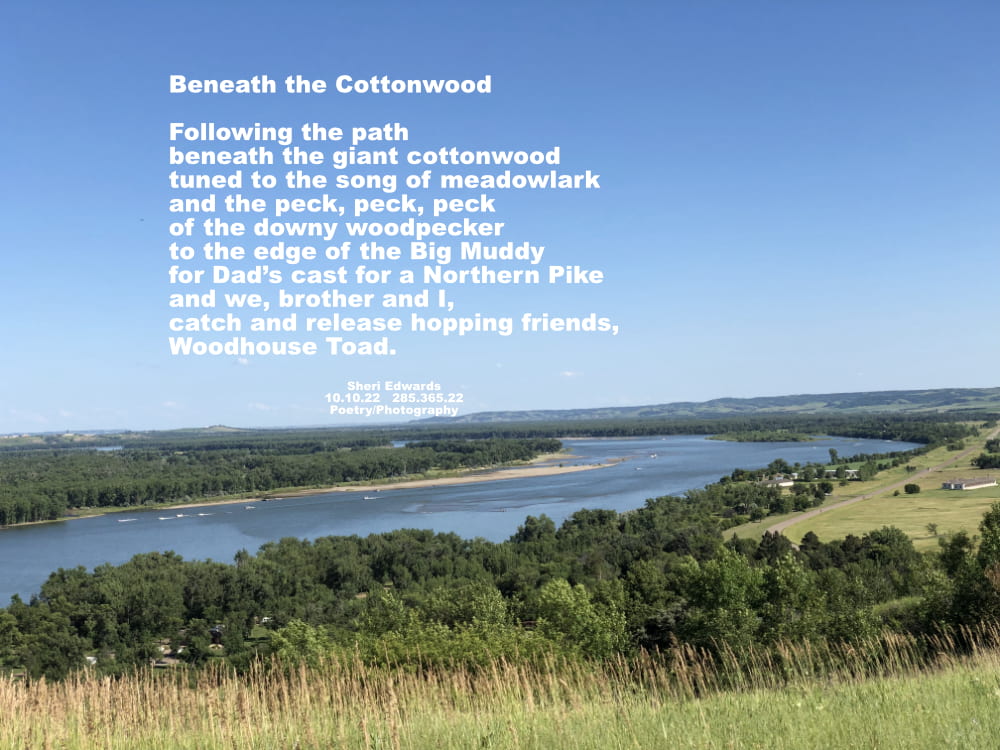![diagram of cottonwood and sycamore leaf, each surrounded with the histories a single tree may have witnessed [see post] also real photos of both leaves.](https://whatelse.edublogs.org/files/2022/10/DC3934_leaf_mapssm.jpg)
WriteOut Daily Create
A lovely leaf prompt today from the Daily Create — #clmooc #DS106 @ds106dc #tdc3934 #writeout and the National Park Service.
The Daily Create is to imagine a leaf and include its map of veins. I chose two of my favorite trees, the cottonwood and the sycamore [also known as the American Plane tree]. I’ve written about the cottonwood for this year’s WriteOut here.
I then saw Kevin’s tweet about the Weir Farm’s National Park Service prompt to create a “leaf map” from the drawing of the leaf.
Leaf History Map
So, I added a Leaf HISTORY map– the things a tree might witness in its long lifespan.
For the cottonwood, I wrote about the trees I grew up with along the Missouri river and added to my journal leaf drawing:
- growing where only the Mandan and Hidatsa lived long ago
- knowing where the buffalo roamed in huge herds
- always there by the river banks of the Knife, Heart, and Big Muddy Missouri Rivers
- used as the supports for the Mandan and Hidatsa earth lodges
- fuel for the fires warming the people in the bitter and cold Dakota winters
For the sycamore, I wrote about my own tree in my backyard, which we have seen in pictures as a sapling in 1934, making our tree eighty-eight years old this year. I wrote about what this sycamore has seen, in the shadow of the building of the Grand Coulee Dam, based on this National Park Service article about the dam, and my own knowledge.
- 1934: a sapling
- 1941: Woody Guthrie wrote and sang “Song of Grand Coulee Dam“
- 1942: opening of Grand Coulee Dam
- Flood Control all the way to the Pacific Ocean
- Hydroelectric power that helped succeed in WWII
- 1948: Irrigation to hundreds of thousands of square miles of otherwise dry fields for crops
- 1967: Third Powerhouse that provided 11% of the Pacific Northwest’s power requirements
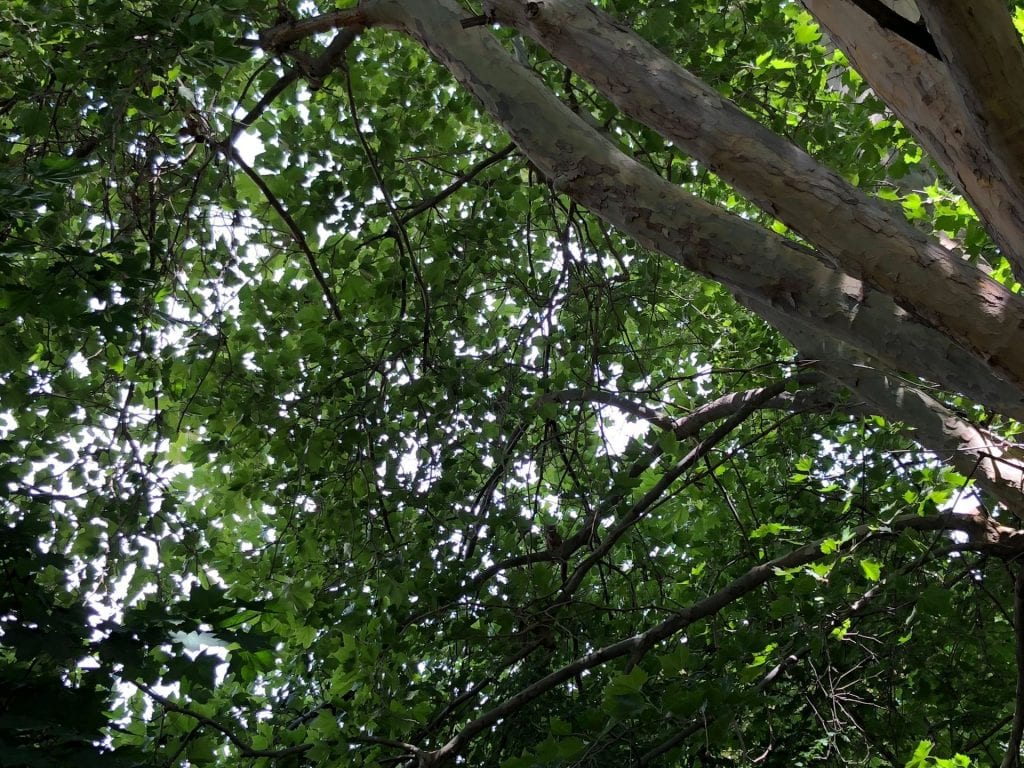
We think we are so important, and yet the long-lived trees survive our own history with their own written in the leaves of each season and the rings of each year as the trees reach for the sunshine and give shade and oxygen and shelter to all earth’s creatures. NASAs Climate Kids tell how our trees give us a longer history than we have records for. Trees are part of the carbon cycle, which is important to understand as we fight with our changing climate.
With the leaf history map completed, poems about the trees seemed relevant, especially as elder beings of our planet earth.
Poetry: Grandfather Trees
I snapped a picture of a cottonwood along banks lake for its “Grandfather Cottonwood” poem and wrote the poem for the Dakota history of my map:
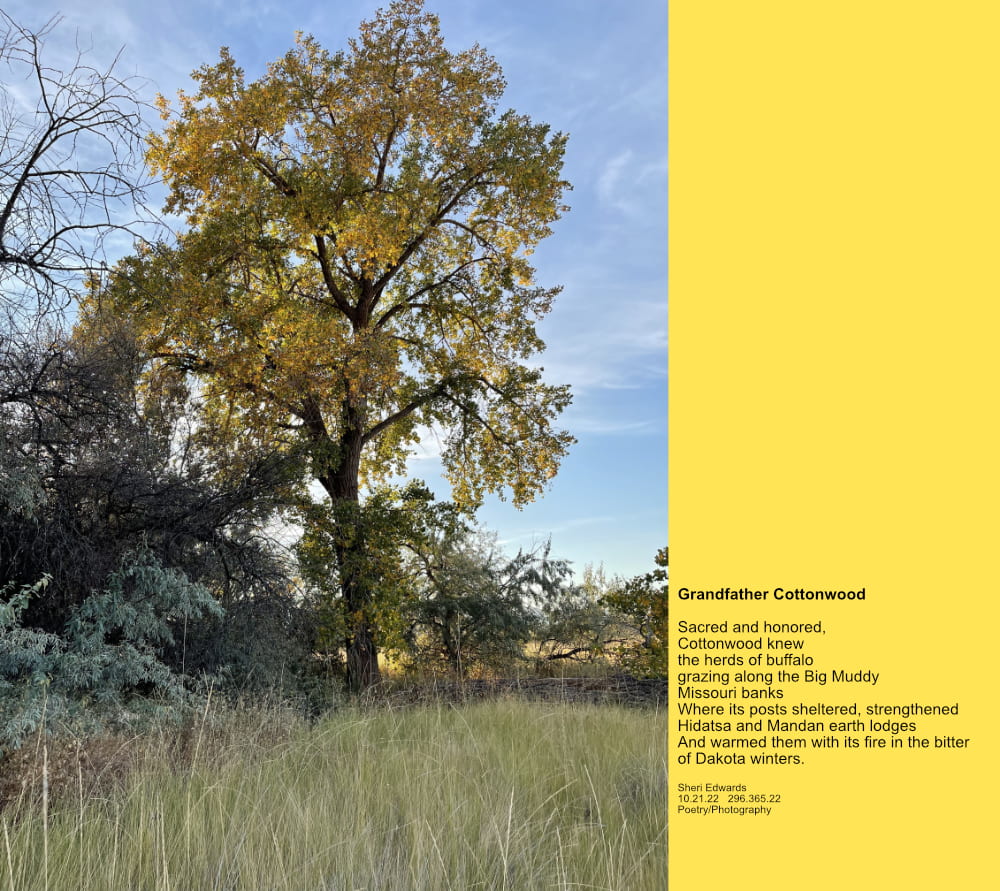
Grandfather Cottonwood
Sacred and honored,
Sheri Edwards
Cottonwood knew
the herds of buffalo
grazing along the Big Muddy
Missouri banks
Where its posts sheltered, strengthened
Hidatsa and Mandan earth lodges
And warmed them with its fire in the bitter
of Dakota winters.
10.21.22 296.365.22
Poetry/Photography
The Sycamore, from my backyard:
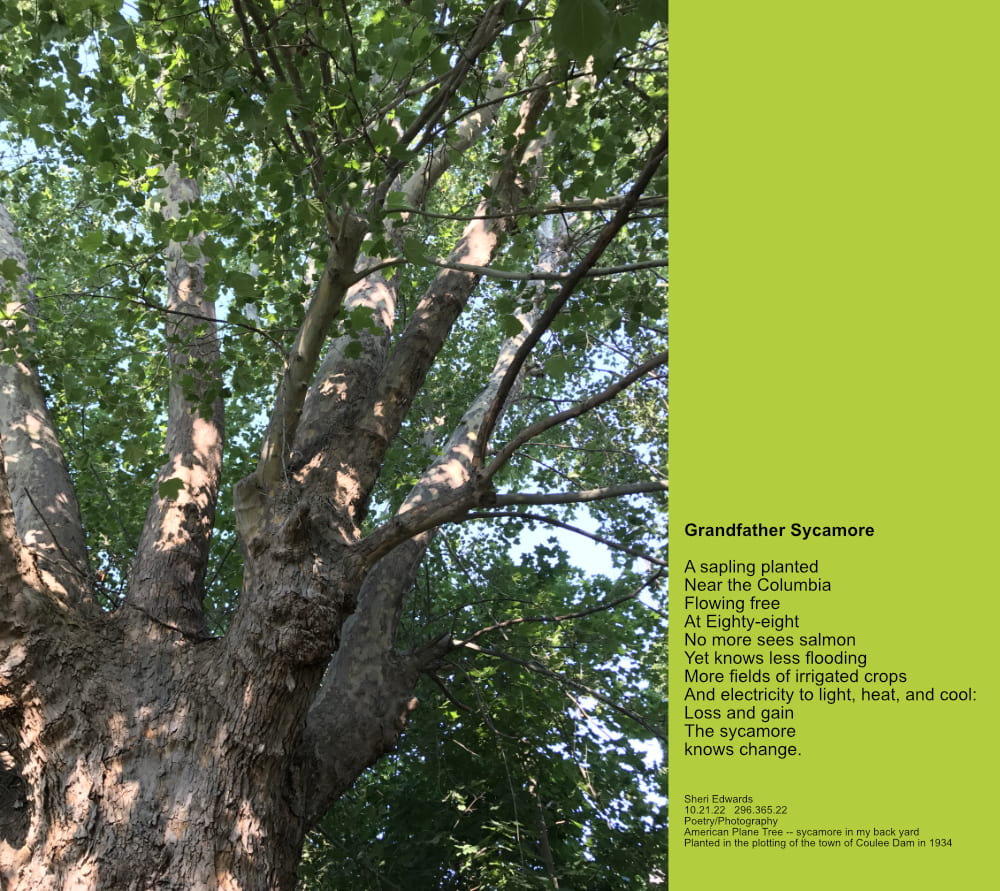
Grandfather Sycamore
A sapling planted
Sheri Edwards
Near the Columbia
Flowing free
At Eighty-eight
No more sees salmon
Yet knows less flooding
More fields of irrigated crops
And electricity to light, heat, and cool:
Loss and gain
The sycamore
knows change.
10.21.22 296.365.22
Poetry/Photography
Your Turn
Your turn: imagine a leaf. Imagine its veins. Imagine its story. It’s almost time for National Novel Writing Month — NaNoWriMo— and your leaf story just might be the one you’ll write a novel about!
This post is part of the October WRITEOUT adventure of the National Writing Project and the National Park Service — a STEAM-powered Write Out 2022. Organized as a public invitation to get out and create, supported by a series of free online activities, Write Out invites educators, students, and families to explore national parks and other public spaces. The goal is to connect and learn through place-based writing and sharing. Learn more and sign up: https://writeout.nwp.org

